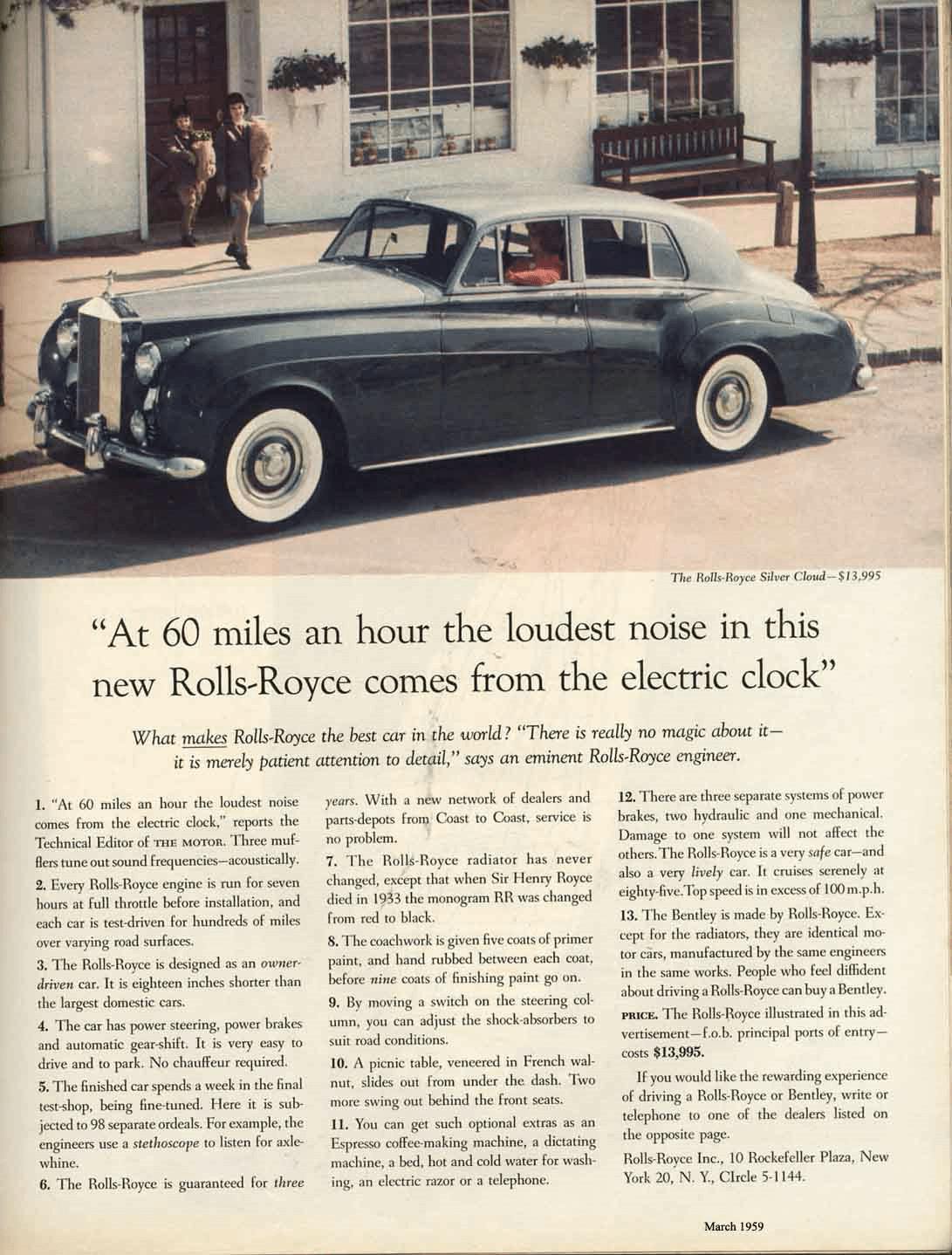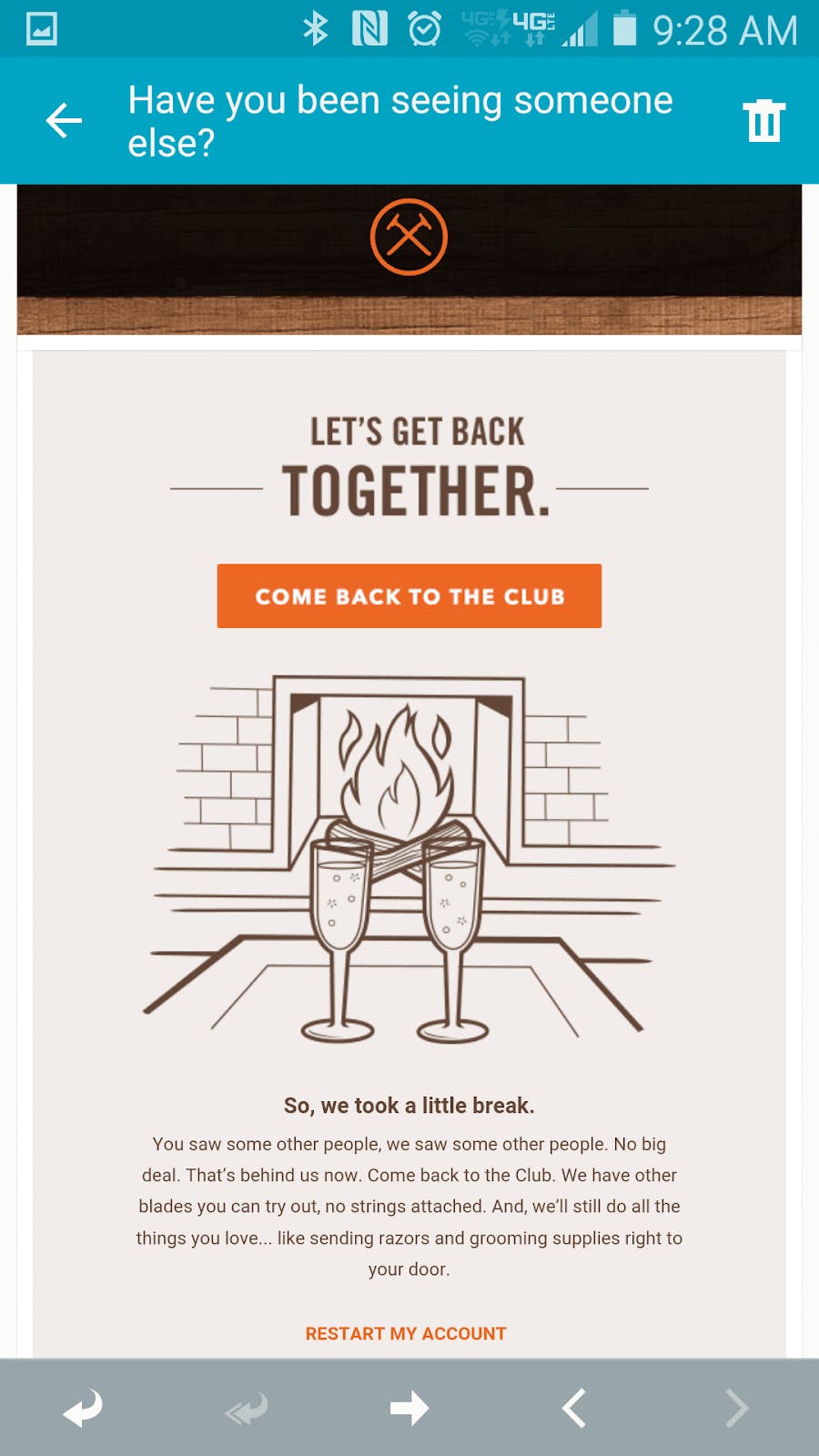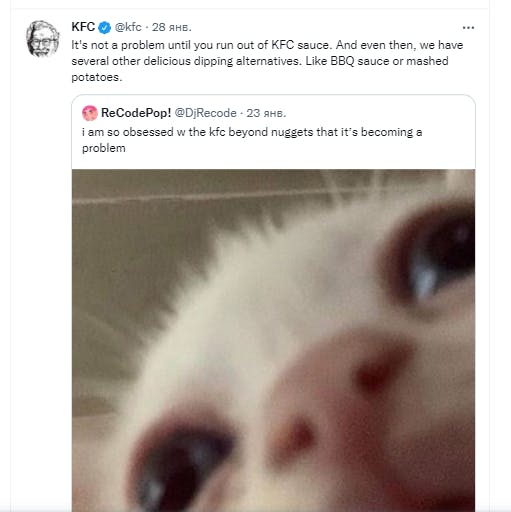What is copywriting: types, examples and secrets
Mar 8th, 2022

Contents
What is copywriting?
Types of copywriting
Examples of excellent copywriting
Copywriting tips and secrets
Copywriting is one of the most crucial elements of effective digital marketing and offline advertising. Every text we see is a form of copywriting. We are surrounded by writings in everyday life. Billboards, emails, blog posts, sales letters, promotions for local restaurants, and magazine advertisements are forms of copywriting. Texts tell stories and convince your customers that they need your product or service.
If you learn to tell captivating stories through copy, you will be able to sell any product to any audience. People do not like aggressive marketing and pushy sales techniques, but informative, funny, and fact-based copy encourages them to look for more information and make a decision. Thus, the text is the best way to communicate the product’s value to potential customers.
What is copywriting?
Copywriting is the process of creating promotional and marketing materials to encourage people to perform a set action, such as buying a product, following the link, or subscribing to a service. So, in other words, the goal of copywriting is to make a sale or persuade a person to take a step leading to a purchase. The materials or “copy” can include written promotions intended for publication in print and online or verbal information in the form of scripts for the videos or commercials. You can find copywriting on websites, product pages, landing pages, paid advertisements, and emails.
The first mention of the word “copy” in the sense of a draft of a news story dates back to the middle of the 1800s. The term was coined in 1828 by Noah Webster and referred to “something original that must be imitated in writing and printing”. Later the definition gained popularity among journalists and printers, but the term was not used in the advertising context until the 20th century. The first example of the word “copy” mentioned in this sense can be found in “The Art of Modern Advertising” by Earnest Elmo Calkins and Ralph Holden, published in 1905. Thus, the word “copywriter” acquired the meaning of the professional writer of advertisements, as opposed to a traditional news writer.
One of the most prominent examples of copywriters in traditional culture is David Ogilvy, also known as the “Father of Advertising” and the author of a brilliant copy. He made a significant contribution to modern advertising; his vision and concepts became iconic, his publications turned into a handbook of advertising techniques. Ogilvy launched successful campaigns for renowned companies, such as Shell, Rolls-Royce, and Dove.
The Father of Advertising was the author of the phrase: “The customer is not a moron, she’s your wife”. David Ogilvy insisted that the advertisers should respect their customers’ intelligence. The other famous sayings by the talented copywriter include: “Advertising people who ignore research are as dangerous as generals who ignore decodes of enemy signals” and "Tell the truth but make it fascinating".

The advertiser stated that a professional cannot create great content without understanding the needs of the target audience, so to learn more information about the readers, a copywriter should conduct extensive research. Ogilvy also emphasized the importance of explaining the reasons to buy a product and the need to come up with a good headline. Let us consider what makes a good copywriter and what other skills and knowledge a specialist should have.
What is a copywriter?
A copywriter is a professional writer who creates text or copy for advertising and marketing purposes. A specialist writes persuasive materials for websites, blogs, emails, white papers, newsletters, social media platforms, and other marketing channels. The professional’s responsibilities include collaborating with marketing and other creative departments to develop communication strategies, keeping brand messaging consistent, and delivering the message across various channels. The job also requires researching topics and conducting interviews, determining how to convey the idea to a certain audience, writing and editing copy, and searching for images needed for publications.
The main trait of a good copywriter, be it a junior specialist or a content strategist, is creating content that appeals to the company’s target audience. Therefore, strong writing skills, grammar competence, and superior research skills are a must. The other necessary skills include optimizing content for a customer’s website or blog to increase traffic and the ability to meet deadlines. Thus, today a professional copywriter should also keep pace with digital technology and monitor changes in Google’s algorithm to determine the most effective SEO techniques and put them into practice.
There are various types of copywriting, but any specialist in this field should be able to motivate consumers to take action. The primary copywriter’s task is to study a clearly defined audience and identify its requirements and objectives. Then the specialist develops a content plan to connect with the audience, demonstrate that their problem is recognized, and provide a solution.
Why businesses need copywriting?
Businesses of any size, type, or niche that intend to communicate with customers require copywriters to do that. The core part of any business is driving a certain action from the target audience. The clients need to be sure that the company has relevant expertise, as well they should understand the brand’s mission, vision, and values. Whether you need to convince customers to sign up for a newsletter, purchase a product or leave a good testimonial, you can achieve this with the help of compelling copy.
A copywriter serves as a link between a business and its audience. The specialist should create publications that reflect the brand identity and convey the company’s fundamental principles while taking into account business objectives and overall sales and marketing strategy.
Moreover, a copywriter will help your company develop unique positioning and communicate your brand message consistently. Creating new content regularly guarantees that the website engagement rate will increase over time. It also ensures that you have enough content to share on social media, attract more followers and improve the click-through rate. If your goal is to increase brand awareness, a good copy will effectively promote your brand and help find a product-market fit.
Types of copywriting
There is a variety of copywriting types to choose from. However, it is crucial to understand the differences between the common types to reach your business goals. Your choice will depend on the content marketing strategy, target audience, the characteristics of your product or service, the platform where you will publish the articles, and the action you want readers to take. Let us review different types of copywriting in more detail.
SEO copywriting
Search engine optimization includes several subcategories, such as local business listings, technical issues, and content. Search engine crawlers favor informative content, so copywriting plays a massive role in your website visibility. SEO copywriting will be useful for online businesses if your objective is to attract visitors through top rankings in search results. The first step towards achieving this goal is to address the user intent for a particular keyword.
With the help of SEO copywriting, you will be able to turn your leads into paying customers and promote the brand on social media. Besides, the techniques used in SEO copywriting allow you to improve conversion funnel and attract organic visitors to your website.
Website copywriting
Website copywriting is the process of creating digital content for websites, social media, and other platforms. The specific feature of website copywriting is the need to grab visitors’ attention at once. Most people read only about 20% of the website content, so you need to make sure to offer crucial points.
Furthermore, online copy reaches a global audience. When someone visits your website for the first time, you have only fifteen seconds to engage the customers. Web pages are non-linear, and you cannot forecast what page a person visited before viewing your content. Due to these reasons, this type of copywriting should be consistent and comprehensive throughout the whole website while being brief at the same time.
Email copywriting
The essential points of good email copy include brevity, attention-grabbing headline, a high level of persuasiveness, a clear message, and a call to action. The best email copywriting usually has a defined goal. The email persuades the user not only to read the text but also to interact with it. In most situations, this entails following the link in the email that leads to the page where you want customers to convert. The conversion could be a response, a trial, a sign-up, or the offer to read your blog post. Whatever it is, the email copy should be tailored towards achieving this goal.
UX copywriting
UX copywriting is the practice of creating copy to help users achieve their goals and provide an intuitive and enjoyable product experience. UX writers write copy or microcopy to guide users when interacting with the application interface. UX copywriter serves as an intermediary between the user and digital product to facilitate communication. Examples of UX writing include call-to-action messages, button labels, notifications, error messages, disclaimers, and on-screen help text. Verbiage is crucial for UX writing as it usually comes in the form of one sentence or even a single word.
B2B copywriting
B2B copywriting focuses on informing other businesses about the company’s products or services. While B2C copywriting appeals to consumers’ emotions, B2B copywriting emphasizes the factors like impact on profit and influence on productivity. In other words, the purpose of B2B copywriting is to demonstrate how the product will make the reader’s life easier. B2C copywriting targets distinct demographics. B2B copywriting, in contrast, is aimed at decision-makers, usually entire teams or groups of workers within a company. Thus, B2B copy should be concise, fact-based, and demonstrate the value and results of a specific project to potential buyers. Some examples of B2B copywriting include press releases and one-pagers.
Ecommerce and product copywriting
Ecommerce and product copywriting is any text created for an online store that explains product benefits and helps Ecommerce stores rank higher in search engines. This type of copywriting includes product descriptions, headlines, and promo offers. To write a good Ecommerce copy, the author should understand consumer psychology, provide practical and factual information and promote the brand’s voice. Ecommerce and product copywriting can be funny and punchy, but at the same time, the copy should address customers’ pain points and encourage them to click the “Add to Cart” button.
Landing page copywriting
A landing page is a web page that typically focuses on a single topic or product. Your potential customers can find the page through search engines and social media, by clicking a link in the email or online advertisement. So, landing page copywriter often deals with a single niche and particular audience. The goal of landing page copywriting is to turn prospects into potential leads or customers. The copywriter can also help your business attract new visitors, target specific audiences, generate qualified leads, and improve brand recognition. The key to the perfect landing page is focusing on a single product marketing objective. If the page meets the expectations of the audience, success is guaranteed.
Social media copywriting
Creating posts for social media platforms can be quite challenging. Social media copywriter needs to consider changing algorithms and trending topics to keep up with the severe competition. The primary purpose of this type of copywriting is to increase engagement and move leads along the sales funnel. To create a brilliant copy, the writer should consider the platform’s features, tailor the content to a specific channel, add compelling visual elements and keep the text short to hold the readers’ attention.
Ad copywriting
Advertising copy is usually made of three parts: headline, main body, and a call to action. Another type of ad copywriting is long-form copy that includes more details, such as testimonials, company stories, and additional product benefits. As this type of copy contains a small number of characters, it should be clear, persuasive, focus on one key benefit for customers and encourage prospects to take action. A/B testing ensures the efficiency of the copy.
Brand copywriting
Copy is a vital part of branding. To build an attractive and cohesive brand that engages customers, you cannot overlook brand copywriting. Brand copywriting is focused on developing a unified communication strategy that incorporates the company’s goal, mission, vision, and values, as well as positioning and tone of voice into every message. The purpose of brand copywriting is to maintain the consistency of every piece of information issued by the company.
Make sure you stick to the same style and tone of voice throughout your article. A perfect brand copy should not only describe the brand’s features but also include emotional triggers to evoke the audience’s interest. Superb writing demonstrates your opportunity to meet customers’ needs in a way they cannot find elsewhere.
Technical copywriting
Technical copywriters create marketing materials for the IT, construction, and manufacturing industries. These materials include website copy, brochures, case studies, and product guides. The goal of a technical copywriter is to explain a topic to the audience and persuade people to purchase tech products. In contrast to technical writers who create user manuals, online FAQs, and help content, copywriters add the human element to the technical information to motivate the readers to take action. To create a good tech copy, examine the characteristics of your product or service, identify the advantages and make it understandable for the reader.
Real estate copywriting
The main objective of real estate copywriting is to attract buyers and sellers by creating listings that describe property features in a way that appeals to potential customers and encourage them to make a purchase. The copywriters often collaborate with real estate agents to advertise their listings to buyers and promote their services to sellers. Good copy allows for differentiating the offer from competitors by highlighting key features of the property, adding the numbers and facts, using emotions, and making the information easier to grasp.
Medical copywriting
Medical copywriting requires extensive research to build a deep knowledge of the industry from primary and secondary sources. A medical copywriter turns the sophisticated terminology into content that is understandable for the general public. A professional follows medical ethical norms and employs SEO skills to optimize search results and sell products or services. This type of specialist may work for a wide range of customers, including hospitals, medical institutions, and scientific companies in the wellness and fitness industry.
AI copywriting
AI copywriting refers to computer-generated text created with natural language processing software. To create AI-generated copy, you need to choose the topic and the type of content you need. Then you provide certain settings for the artificial intelligence algorithm, and it creates content based on given parameters. AI evaluates similar existing pieces on the Internet and transforms it into a unique and plagiarism-free publication. This type of copywriting allows businesses to save time, analyze data more quickly than humans and scale their content production. AI copywriting is best suited for generating product descriptions and other bulk writing. We do not believe it may be widely used, as you can almost always tell an AI writing on anything longer than one paragraph. Quillbot is an AI tool you can test to try it yourself.
Examples of excellent copywriting
Once we have reviewed the most widely used types of copywriting, it is time to look at the examples. We have chosen four examples of exceptional copy so that you can learn from other brands’ experiences.
Ricola is a Swiss company that produces cough drops and breath mints. The brand’s marketing strategy focuses on memorable and straightforward copy with slightly edgy humor. In 2014, Ricola launched a promotional campaign that showed how the misplaced cough could completely change the meaning of a statement, and it worked. The secret of success lies in a funny tone of voice in contrast to the competitors’ copy in the medical industry which often tends to be technical and boring. The advertisement demonstrates the product instead of convincing the reader that the company produces the best cough drops. Rather, Ricola uses the picture of relatable packaging and catchy content.

Dollar Shave Club is known for its original approach to marketing. Brand’s email copy is an excellent example of a unique strategy. The first thing to consider is great customer segmentation. This email is not sent to everyone on the company’s mailing list. Only those users who had canceled the subscription received this message. The other crucial component is the email subject line which states: “Have you been seeing someone else?”. It encourages a person to open the email immediately. The copy and image emphasize the relationship between the customer and the brand, and it does not look like a standard marketing email.

Twitter account by KFC shares funny and witty posts with jokes and memes. Their humor is not offensive, and the brand has the best responses to the comments. Moreover, the company often encourages the audience to contact their customer service on Twitter if they have a problem with the order.

The distinctive feature of the Instagram profile of National Geographic is brilliant storytelling. The company publishes photos and stories by explorers around the world. Storytelling is a great tool to keep the subscribers engaged and educate them simultaneously. National Geographic also shares user-generated content and motivates the audience to participate in monthly and weekly photo contests.

Copywriting tips and secrets
Analyzing the examples listed above, we can identify five tips for writing persuasive copy. Let us consider these secrets to strengthen the texts you create.
Conduct thorough research. The best copywriters are the most diligent researchers. David Ogilvy and one of his students, Gary Bencivenga, emphasized that you need to collect seven times more valuable information than you will use in the article. Good copywriters learn everything about the product and the potential customer’s fears, needs, and assumptions, so the copy comes naturally.
Clarity means more than cleverness. You need to make sure the audience understands the humor in your copy. The material should be clear, concise, and easy to perceive. Use short words and conversational language. The next step is to make people curious and promise them an irresistible benefit.
Determine the problems your target audience faces. You will not provide a remedy if you do not understand the pain points. Address customers’ pain points depending on their sales funnel stage. Then clearly state the customer’s problem, use emotions to encourage customers to take action and finally, provide a solution.
Pay attention to the headline. John Caples, Vice President of the nation's third-largest advertising agency BBDO and one of the greatest direct marketing copywriters, insisted that headlines should evoke curiosity or stimulate an intense emotion. People read headlines five times more than the body copy. Thus, a headline should be straightforward, clever, and simple. Use the most assertive phrases from your article in the headline to encourage customers to read it.
Think outside the box. Use something new and unique to attract customers’ attention and differentiate from competitors. Break the rules of grammar and syntax, speak your prospect’s language, and appeal to emotions. First, look for credible sources but then dig deeper to identify unusual or rare information. Tell stories, make the text visually appealing and entertaining, include controversy.
Excellent copy may help you build a brand, generate awareness and increase sales. A successful marketing strategy requires the ability to create compelling text. You will not sell even the best product without persuasive content that highlights its advantages. The tips and secrets we provided in this article will help you better understand your target audience and write copy that drives more sales.
